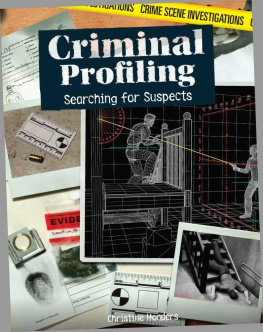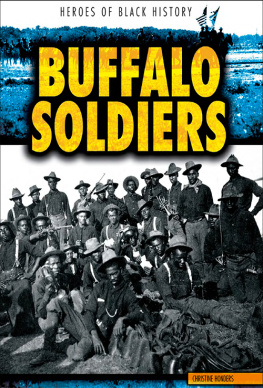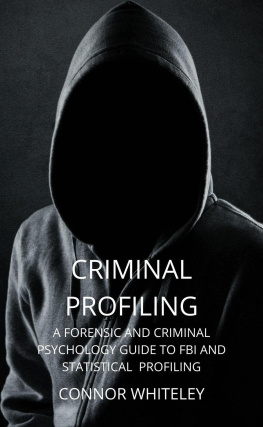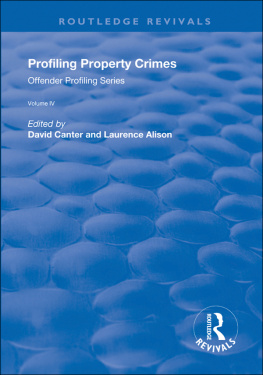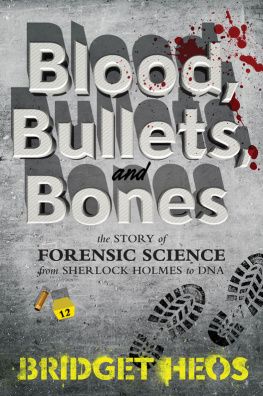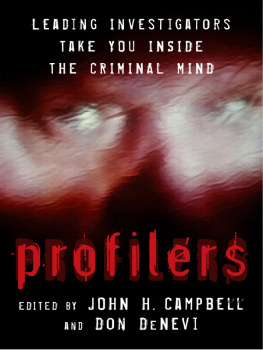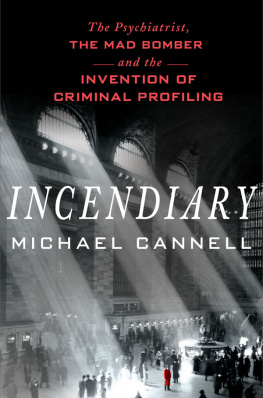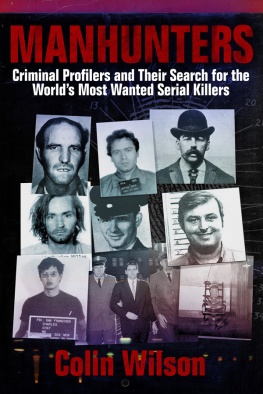Published in 2018 by
Lucent Press, an Imprint of Greenhaven Publishing, LLC
353 3rd Avenue Suite 255
New York, NY 10010
Copyright 2018 Greenhaven Press, a part of Gale, Cengage Learning
Gale and Greenhaven Press are registered trademarks used herein under license.
All new materials copyright 2018 Lucent Press, an Imprint of Greenhaven Publishing, LLC.
All rights reserved. No part of this book may be reproduced in any form without permission in writing from the publisher, except by a reviewer.
Designer: Deanna Paternostro
Editor: Siyavush Saidian
Library of Congress Cataloging-in-Publication Data
Names: Honders, Christine, author.
Title: Criminal profiling : searching for suspects / Christine Honders.
Description: New York : Lucent Press, [2018] | Series: Crime scene investigations | Includes bibliographical references and index.
Identifiers: LCCN 2017039635 | ISBN 9781534561748 (library bound book) | ISBN 9781534562721 (paperback)
Subjects: LCSH: Criminal behavior, Prediction of-Juvenile literature. |
Criminal psychology--Juvenile literature. | Criminal investigation--Juvenile literature. | Forensic sciences--Juvenile literature.
Classification: LCC HV8073.5 .H66 2018 | DDC 363.25/8-dc23 LC record available at https://lccn.loc.gov/2017039635
Printed in the United States of America
CPSIA compliance information: Batch #CW18KL: For further information contact Greenhaven Publishing LLC, New York, New York at 1-844-317-7404.
Please visit our website, www.greenhavenpublishing.com . For a free color catalog of all our high-quality books, call toll free 1-844-317-7404 or fax 1-844-317-7405.
Contents
Chapter one :
The Art of Criminal Profiling
Chapter two :
Crime Scene Analysis
Chapter three :
The Victims Story
Chapter four :
Into the Mind of the Murderer
Chapter five :
Yours, Truly Guiltily
Foreword
F or decades, popular television programs and movies have depicted the life and work of police officers, detectives, and crime scene investigators. Many of these shows and films portray forensic scientists as the brains responsible for cracking cases and bringing criminals to justice. Undoubtedly, these crime scene analysts are an important part in the process of crime solving. With modern technology and advances in forensic analysis, these highly trained experts are a crucial component of law enforcement systems all across the world.
Police officers and detectives are also integral members of the law enforcement team. They are the ones who respond to 911 calls about crime, collect physical evidence, and use their high level of training to identify suspects and culprits. They work right alongside forensic investigators to figure out the mysteries behind why a crime is committed, and the entire team cooperates to gather enough evidence to convict someone in a court of law.
Ever since the first laws were recorded, crime scene investigation has been handled in roughly the same way. An authority is informed that a crime has been committed; someone looks around the crime scene and interviews potential witnesses; suspects are identified based on evidence and testimony; and, finally, someone is formally accused of committing a crime. This basic plan is generally effective, and criminals are often caught and brought to justice. Throughout history, however, certain limitations have sometimes prevented authorities from finding out who was responsible for a crime.
There are many reasons why a crime goes unsolved: Maybe a dead body was found too late, evidence was tampered with, or witnesses lied. Sometimes, even the greatest technology of the age is simply not good enough to process and analyze the evidence at a crime scene. In the United States during the 20th century, for example, the person responsible for the infamous Zodiac killings was never found, despite the earnest efforts of hundreds of policemen, detectives, and forensic analysts.
In modern times, science and technology are integral to the investigative process. From DNA analysis to high-definition surveillance video, it has become much more difficult to commit a crime and get away with it. Using advanced computers and immense databases, microscopic skin cells from a crime scene can be collected and then analyzed by a forensic scientist, leading detectives to the home of the culprit of a crime. Dozens of people work behind the scenes of criminal investigations to figure out the unique and complex elements of a crime. Although this process is still time-consuming and complicated, technology is constantly improving and adapting to the needs of police forces worldwide.
This series is designed to help young readers understand the systems in place to allow forensic professionals to do their jobs. Covering a wide range of topics, from the assassination of President John F. Kennedy to 21st-century cybercriminals, these titles describe in detail the ways in which technology and criminal investigations have evolved over more than 50 years. They cite eyewitnesses and experts in order to give a detailed and nuanced picture of the difficult task of rooting out criminals. Although television shows and movies add drama to the crime scene investigation process, these real-life stories have enough drama on their own. This series sticks to the facts surrounding some of the highest-profile criminal cases of the modern era and the people who work to solve them and other crimes every day.

I n November of 1980, the bodies of four women were found around the San Francisco Bay Area. The local Federal Bureau of Investigation (FBI) worked for months to find the killer with no success, so they asked for help from FBI special agent John E. Douglas. After examining the evidence, he made a speech to the task force that was about the serial killer. He told them the killer was white, in his early 30s, and had probably spent some time in jail for sex crimes. He was shy but intelligent and probably worked in an industrial job. Douglas suspected that he may have a background in arson or was cruel to animals. Another thing, he told his listeners, the killer will have a speech impediment.
John E. Douglas was a professional criminal profiler, and his job was to study the evidence to learn more about the specific traits of the killer and what may have motivated him. Douglas explained that since the killer used quick, brutal force on his victims, he probably had some sort of mental block that made him embarrassed to talk to them. The killer was strong, so Douglas did not think he was physically disabled, and the few eyewitnesses there were did not mention any strange physical features on the attacker. Douglas thought that the disability was something less obvious. I may be wrong about some things, he claimed. I may miss the age. I may miss the occupation or the IQ. But Im certainly not going to miss the race or the sex, and ... Im not going to miss that he has some kind of defect that really bothers him. Maybe its not a speech impediment, but I think it is.
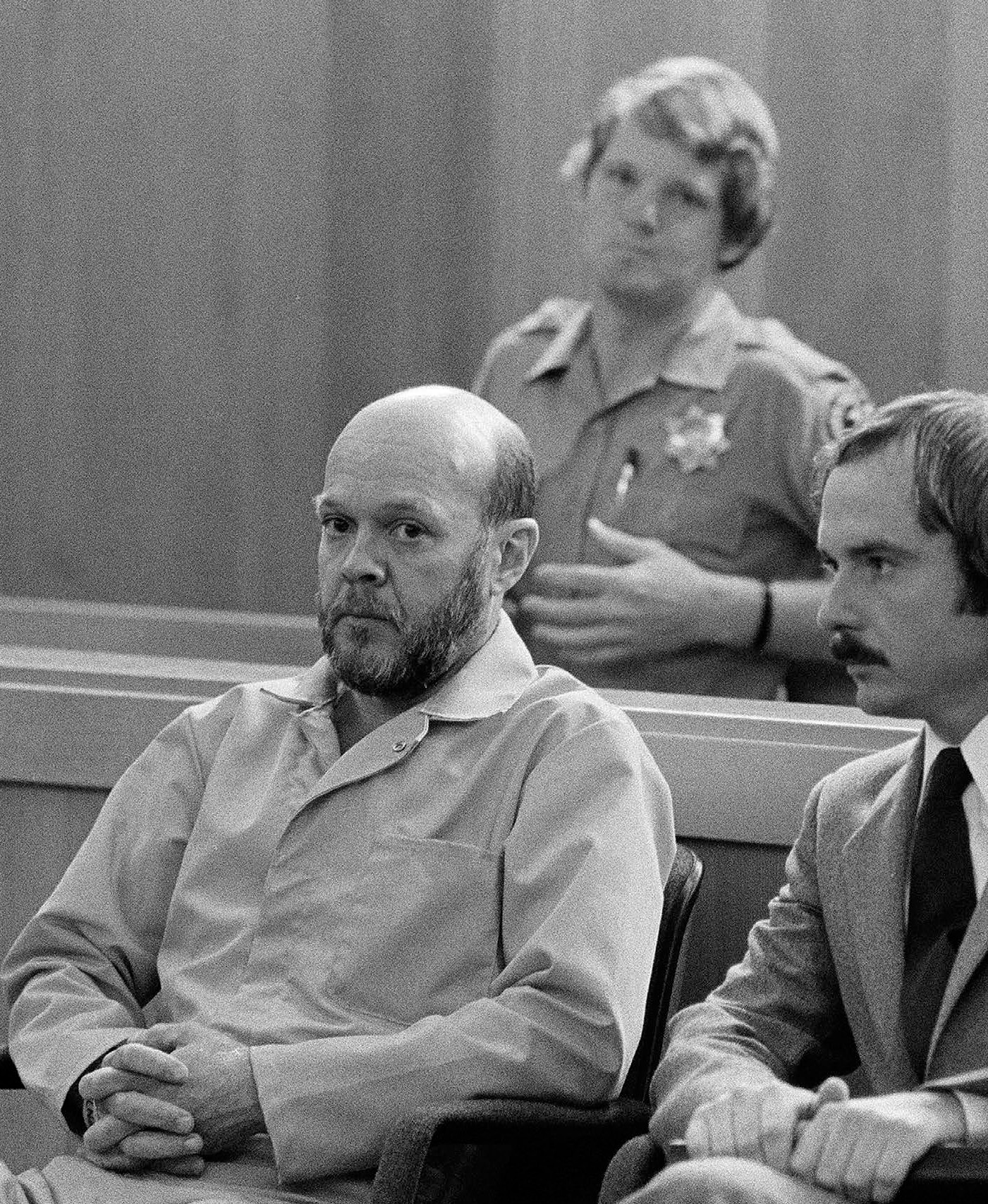
David Carpenter, shown here, murdered 10 women. Criminal profiling played an important part in bringing him to justice.

